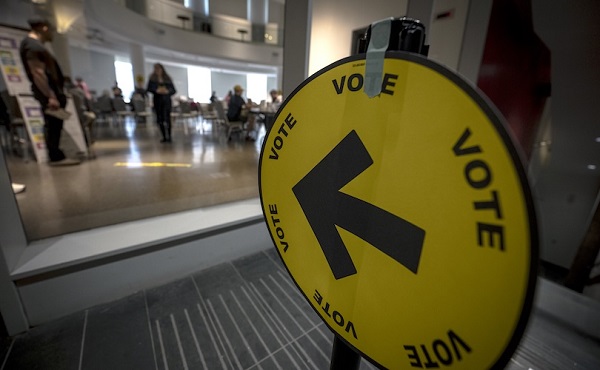National
Online Harms Act threatens free expression in Canada
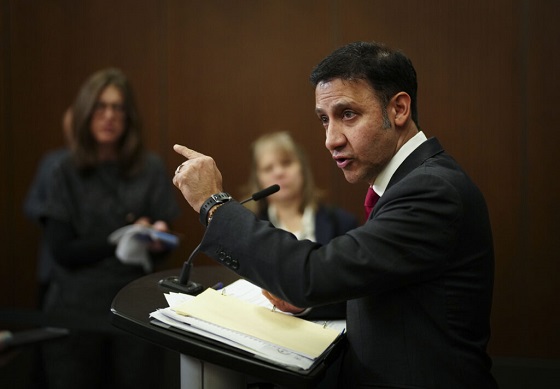
News release from the Justice Centre for Constitutional Freedoms
This repudiates centuries of legal tradition that rightly reserved punishment for what a person had done, not for what a person might do. Under this new provision, a complainant can assert to a provincial court that they “fear” that someone will promote genocide, hate or antisemitism.
On February 26, Minister of Justice and Attorney General of Canada Arif Virani introduced Bill C-63, the Online Harms Act, in the House of Commons. The Online Harms Act is presented by the government as a means to promote the online safety of persons in Canada and reduce harmful content online. The Online Harms Act would impose severe penalties for online and offline hate speech, including life imprisonment, which is the most severe criminal punishment in Canada. This new legislation would establish a new Digital Safety Commission with power to enforce new regulations created by the federal cabinet. The Canadian Human Rights Commission would acquire new powers to prosecute and punish non-criminal hate speech.
Good intentions should be applauded
Although the Online Harms Act seriously threatens free expression in Canada, there are good intentions behind some of its provisions. It is a laudable goal to force online platforms to remove revenge porn and other non-consensual sharing of intimate images, content that bullies children, content that sexually victimizes children, content that encourages children to harm themselves, and content that incites violence, terrorism or hatred.
Unnecessary duplication of the Criminal Code
However, good intentions do not justify passing additional laws that duplicate what is already prohibited by Canada’s Criminal Code. Additional laws that duplicate existing laws are a poor substitute for good law enforcement.
Section 162.1(1) of Canada’s Criminal Code already prohibits online and offline publication of an intimate image without consent. Section 163 already prohibits publication of obscene materials and child pornography. Thus, it is already illegal to post online content that sexually victimizes a child or revictimizes a survivor.
Section 264(1) already prohibits criminal harassment. Section 319(1) already prohibits the public incitement of hatred towards a group that is identifiable by race, ethnicity, religion, sex, sexual orientation, gender identity, gender expression and other personal characteristics. Section 59(1) criminalizes sedition: advocating the use of force to achieve governmental change within Canada. Sections 83.21 and 83.22 criminalize instructing to carry out terrorist activity; any online content that incites terrorism is already illegal.
Further, Section 22 of Canada’s Criminal Code prohibits counselling, procuring, soliciting or inciting another person “to be a party to an offence.” Any person who counsels, procures, solicits or incites another person to be a party to an offence will be found guilty if the person receiving such counsel commits the offence in question. This applies to terrorism and other violent crimes, and even to minor criminal offenses like shoplifting. Further, section 464 of the Criminal Code criminalizes counselling another person to commit an offence even if that offence is not committed.
Those who support the Online Harms Act should explain why they believe that existing legislation is inadequate to address “harmful” online expression.
New government bodies to censor online speech
If passed into law, the Online Harms Act will create a new Digital Safety Commission to enforce compliance with new regulations created by the federal cabinet. This Digital Safety Commission will have the power to regulate nearly any person or entity operating as a “social media service” in Canada. Any person or social media service found to have permitted “harmful content” would face penalties. The severity of the penalties would be established by the federal cabinet. The creators and users of online content will self-censor to avoid the risk of running afoul of the new regulations and government-imposed censorship. The Online Harms Act provides that an Order of the Digital Safety Commission may be converted into an Order of the Federal Court and enforced like a Court Order. This could result in people operating social media services being fined and imprisoned for contempt of court if they refuse to censor Canadians’ speech.
Pre-emptive punishment for crimes not committed
The Online Harms Act, if passed into law, will add section 810.012 to the Criminal Code, which will permit pre-emptive violations of personal liberty when no crime has been committed. This repudiates centuries of legal tradition that rightly reserved punishment for what a person had done, not for what a person might do. Under this new provision, a complainant can assert to a provincial court that they “fear” that someone will promote genocide, hate or antisemitism. If the judge believes that there are “reasonable grounds” to justify the fear, the court can violate the liberty interests of the accused citizen by requiring her or him to do any or all of the following:
- wear an ankle bracelet (electronic monitoring device)
- obey a curfew and stay at home, as determined by the judge
- abstain from alcohol, drugs, or both
- provide bodily substances (e.g. blood, urine) to confirm abstinence from drugs or alcohol
- not communicate with certain designated persons
- not go to certain places, as determined by the judge
- surrender her or his legally owned and legally required firearms
In other words: a citizen who has not committed any crime can be subjected to one or more (or all) of the above conditions just because someone fears that that person might commit a speech crime in future. Further, if the person who has committed no crime fails to agree to these court-ordered violations of her or his personal liberty, she or he could be sentenced to up to two years in prison.
Our criminal justice system is not supposed to function this way. Violating the liberty of citizens through pre-emptive punishment, when no crime has been committed (and quite possibly when no crime will be committed), is a radical departure from centuries of common law tradition. The respect that our legal system has for individual rights and freedoms means that an accused person is presumed innocent until proven guilty by way of a fair trial, held before an independent and impartial court. We do not punish the innocent, nor do we restrict their liberty based on what they might do. The mere fear that harmful expression may occur is not a legitimate basis for court-ordered imprisonment or other conditions that violate personal liberty.
Life imprisonment for words spoken
For the existing Criminal Code offence of advocating for genocide, the Online Harms Act would raise the maximum penalty from five years in jail to life imprisonment. Free societies recognize the distinction between speech and actions. The Online Harms Act blurs that distinction.
Considering the inherent difficulty in determining whether a person has actually “advocated for genocide,” the punishment of a five-year prison term is already an adequate deterrent for words alone.
Federal cabinet can censor speech without input from Parliament
The Online Harms Act, if passed into law, would give new powers to the federal cabinet to pass regulations (which have the same force of law as legislation passed by Parliament) that place prohibitions or obligations on social media services. This includes passing regulations that impose fines or other consequences (e.g., the removal of a licence or the shutting down of a website) for non-compliance. New regulations can be created by the federal cabinet in its sole discretion, and do not need to be debated, voted on or approved by Parliament. Parliamentary proceedings are public. Any political party, or even one single MP, can raise public awareness about a Bill that she or he disagrees with, and can mobilize public opposition to that Bill. Not so with regulations, which are deliberated in secret by the federal cabinet, and that come into force without any public consultation or debate.
Apart from a federal election held once every four years, there is no meaningful way to hold cabinet to account for the draconian censorship of social media services by way of regulations and the harsh penalties that may be imposed for hosting “harmful content.” The federal cabinet can also decide what number of “users” the “social media service” needs to have in order to trigger federal regulation of content, or the federal cabinet can simply designate a social media service as regulated, regardless of the number of its users.
New censorship powers for Canadian Human Rights Commission
The Online Harms Act, if passed into law, will give the Canadian Human Rights Commission new powers to prosecute and punish offensive but non-criminal speech by Canadians if, in the subjective opinion of unelected and unaccountable bureaucrats, they deem someone’s statement to be “hateful.” The Online Harms Act will empower Canadians offended by non-criminal expression to file complaints against their fellow citizens.
Those who are prosecuted by the Human Rights Commission cannot defend themselves by establishing that their supposedly “hateful” statement is true, or that they had reasonable grounds for believing that their statement was true.
Those found guilty by the Canadian Human Rights Tribunal can be required to pay as much as $50,000 to the government, plus up to $20,000 to the person(s) designated as “victims” by the Canadian Human Rights Tribunal. These significant financial penalties will discourage or eliminate necessary discussion on controversial but important issues in our society.
Advocates for censorship often stress the fact that human rights prosecutions are not criminal. It is true that those found guilty of violating vague speech codes by the Canadian Human Rights Tribunal do not suffer the consequences of a criminal record. However, those who are prosecuted for expressing their beliefs face the difficult choice of having to spend tens of thousands of dollars on legal bills or having to issue an abject apology. Regardless of whether they choose to defend themselves against the complaint or not, they may still be ordered to pay up to $20,000 to the offended party or up to $50,000 to the government, or up to $70,000 to both.
Many Canadians will continue to exercise their Charter-protected freedom of expression, but many will self-censor to avoid the risk of being prosecuted by the Canadian Human Rights Commission.
Anonymous complaints: no right to face one’s accuser
The Online Harms Act, if passed into law, will allow complaints to be filed against Canadians in secret, such that the citizen who is prosecuted by the Canadian Human Rights Commission loses the ancient and well-founded right to face and question one’s accuser. This repudiates centuries of common law tradition requiring the legal process to be public and transparent.
The pretext for eliminating this necessary and long-standing legal protection is that some complainants might be subjected to “threats, intimidation or discrimination.” This ignores the fact that threats and intimidation are already Criminal Code offences, and any illegal discrimination can be addressed by way of a new and separate complaint. Those filing complaints about expression should be accountable for their decision to do so; this is an inherent and necessary component of both criminal and civil legal proceedings.
No need to establish that someone was harmed
If the Online Harms Act is passed into law, the Canadian Human Rights Commission will not even require a victim in order to prosecute a citizen for what she or he has said. For example, a man in Vancouver can file an anonymous complaint against a woman in Nova Scotia who made disparaging online remarks about a mosque in Toronto, regardless of whether that mosque’s members were harmed, or even offended, by the post. No actual victims are required for the Canadian Human Rights Commission to find guilt or to impose penalties. Nor does a victim need to prove that he or she suffered loss or damage; feeling offended by alleged “hate” is all that is needed to become eligible for financial compensation.
Conclusion
For reasons set out here above, the Online Harms Act will harm freedom of expression in Canada if it is passed into law. Many Canadians will self-censor to avoid being prosecuted by the Canadian Human Rights Commission. Canadians who do not self-censor, by practicing courage and by continuing to exercise their Charter-protected freedom of expression, will still see their online expression removed from the internet by the operators of social media websites and platforms. These operators will seek to avoid running afoul of Mr. Trudeau’s new regulations. Everyone will live in fear of the Digital Safety Commission.
The Justice Centre urges all Members of Parliament to vote against this legislation.
Censorship Industrial Complex
Canada’s justice minister confirms ‘hate crimes’ bill applies to online content
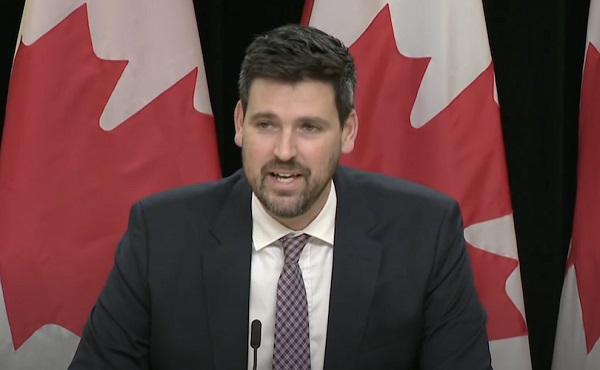
From LifeSiteNews
Individuals could be criminally charged for social media posts or other online content deemed offensive by the government under the Combating Hate Act.
Canadian Justice Minister Sean Fraser admitted that his new “hate crime” bill would indeed allow a person to be criminally charged for social media posts deemed offensive by the government.
Recently asked about Bill C-9, the Combating Hate Act, Fraser said the bill would indeed apply to certain online content that involves the “willful promotion of hatred.”
“Generally speaking, the law will apply equally online as it does in real communities,” he said, adding, “just in the limited circumstances where there is the willful promotion of hatred against someone.”
As reported by LifeSiteNews, Bill C-9 has been blasted by constitutional experts as allowing empowered police and the government to go after those it deems have violated a person’s “feelings” in a “hateful” way.
Bill C-9 was brought forth in the House of Commons on September 19 by Fraser. The Liberals have boasted that the bill will make it a crime for people to block the entrance to, or intimidate people from attending, a church or other place of worship, a school, or a community center. The bill would also make it a crime to promote so-called hate symbols and would, in effect, ban the display of certain symbols such as the Nazi flag.
While being questioned by Conservative MP Andrew Lawton about Bill C-9, Fraser was asked if the new law would “affect what people can say and write on the internet” and also if people could be retroactively punished for online comments made today.
In reply, Fraser said, “The only circumstance where you could imagine some online comment attracting scrutiny under this law would attach to behaviour that is criminal today but would be punished less severely.”
He said that “(t)he willful promotion of hate is a crime today, but we want to recognize a distinct charge where that same behaviour uses certain symbols of hate to bring a higher degree of culpability.”
John Carpay of the Justice Centre for Constitutional Freedoms (JCCF) has blasted Bill C-9 as something that would “empower police” and the government to go after those it deems have violated a person’s “feelings” in a “hateful” way.
Also, as reported by LifeSiteNews, Conservative MP Leslyn Lewis called out the hypocrisy of Bill C-9 for being silent regarding rising “Christian hate.”
Lewis has warned before that Bill C-9 will open the door for authorities to prosecute Canadians’ speech deemed “hateful possibly.”
Carpay also lamented how the bill mentions “rising antisemitism” but says nothing about the arson attacks on Catholic and Christian churches plaguing Canada.
“Anti-Catholic hate is obviously not on the minister’s radar. If it were, he would have mentioned it when introducing the Combating Hate Act,” Carpay wrote.
Since taking power in 2015, the Liberal government has introduced numerous new bills that, in effect, censor internet content and restrict people’s ability to express their views.
Health
Canada surrenders control of future health crises to WHO with ‘pandemic agreement’: report

From LifeSiteNews
Canada’s top constitutional freedom group warned that government officials have “relinquished” control over “future health crises” by accepting the terms of the World Health Organization’s (WHO) revised International Health Regulations (IHR).
The warning came in a report released by the Justice Centre for Constitutional Freedoms (JCCF). The group said that Prime Minister Mark Carney’s acceptance earlier this year of the WHO’s globalist-minded “pandemic agreement” has “placed Canadian sovereignty on loan to an unelected international body.”
“By accepting the WHO’s revised IHR, the report explains, Canada has relinquished its own control over future health crises and instead has agreed to let the WHO determine when a ‘pandemic emergency’ exists and what Canada must do to respond to it, after which Canada must report back to the WHO,” the JCCF noted.
The report, titled Canada’s Surrender of Sovereignty: New WHO health regulations undermine Canadian democracy and Charter freedoms, was authored by Nigel Hannaford, a veteran journalist and researcher.
The WHO’s IHR amendments, which took effect on September 19, are “binding,” according to the organization.
As reported by LifeSiteNews, Canada’s government under Carney signed onto them in May.
Hannaford warned in his report that “(t)he WHO has no legal authority to impose orders on any country, nor does the WHO possess an army, police, or courts to enforce its orders or regulations.”
“Nevertheless, the WHO regards its own regulations as ‘an instrument of international law that is legally binding on 196 countries, including Canada” he wrote.
Hannaford noted that “Surrendering Canada’s sovereignty” to the IHR bodies is itself “contrary to the constitutional principle of democratic accountability, also found in the Canadian Charter of Rights and Freedoms.”
“Canada’s health policies must reflect the needs, desires, and freedoms of Canadians – not the mandates of distant bureaucrats in Geneva or global elites in Davos. A free and democratic Canada requires vigilance and action on the part of Canadians. The time to act is now” he wrote.
Among the most criticized parts of the agreement is the affirmation that “the World Health Organization is the directing and coordinating authority on international health work, including on pandemic prevention, preparedness and response.”
While the agreement claims to uphold “the principle of the sovereignty of States in addressing public health matters,” it also calls for a globally unified response in the event of a pandemic, stating plainly that “(t)he Parties shall promote a One Health approach for pandemic prevention, preparedness and response.”
Constitutional lawyer Allison Pejovic noted that “(b)y treating WHO edicts as binding, the federal government has effectively placed Canadian sovereignty on loan to an unelected international body.”
“Such directives, if enforced, would likely violate Canadians’ Charter rights and freedoms,” she added.
Hannaford said that “Canada’s health policies must be made in Canada.”
“No free and democratic nation should outsource its emergency powers to unelected bureaucrats in Geneva,” he wrote.
The report warned that new IHR regulations could mandate that signatory nations impose strict health-related policies, such as vaccine mandates or lockdowns, with no “public accountability.”
“Once the WHO declares a ‘Pandemic Emergency,’ member states are obligated to implement such emergency measures ‘without delay’ for a minimum of three months,” the JCCF said.
“Canada should instead withdraw from the revised IHR, following the example of countries like Germany, Austria, Italy, the Czech Republic, and the United States,” the JCCF continued. “The report recommends continued international cooperation without surrendering control over domestic health policies.”
Earlier this year, Conservative MP Leslyn Lewis condemned the Liberal government for accepting the WHO’s IHR.
-
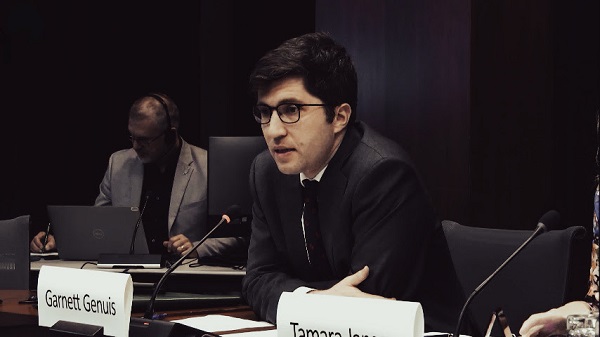
 Automotive2 days ago
Automotive2 days agoParliament Forces Liberals to Release Stellantis Contracts After $15-Billion Gamble Blows Up In Taxpayer Faces
-

 National2 days ago
National2 days agoPolitically Connected Canadian Weed Sellers Push Back in B.C. Court, Seek Distance from Convicted Heroin Trafficker
-

 Alberta2 days ago
Alberta2 days agoPetition threatens independent school funding in Alberta
-

 Courageous Discourse2 days ago
Courageous Discourse2 days agoNo Exit Wound – EITHER there was a very public “miracle” OR Charlie Kirk’s murder is not as it appears
-

 Business2 days ago
Business2 days agoQuebecers want feds to focus on illegal gun smuggling not gun confiscation
-

 MAiD1 day ago
MAiD1 day agoDisabled Canadians increasingly under pressure to opt for euthanasia during routine doctor visits
-
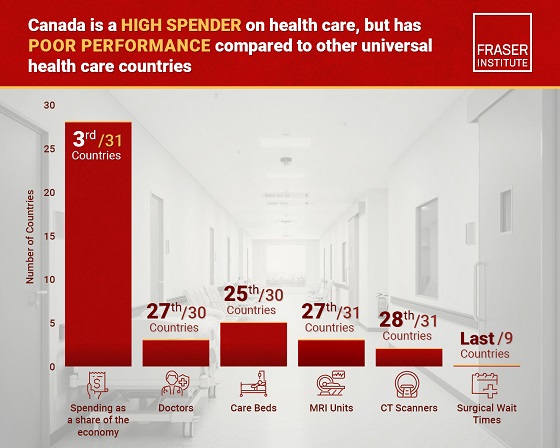
 Business2 days ago
Business2 days agoCanada has fewer doctors, hospital beds, MRI machines—and longer wait times—than most other countries with universal health care
-

 Censorship Industrial Complex2 days ago
Censorship Industrial Complex2 days agoWho tries to silence free speech? Apparently who ever is in power.

